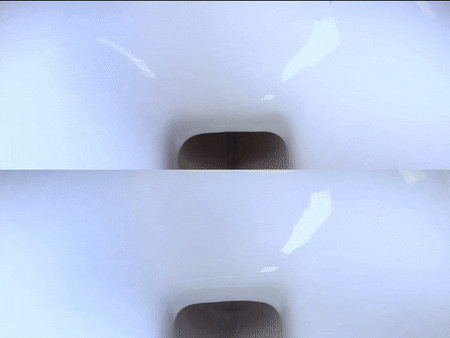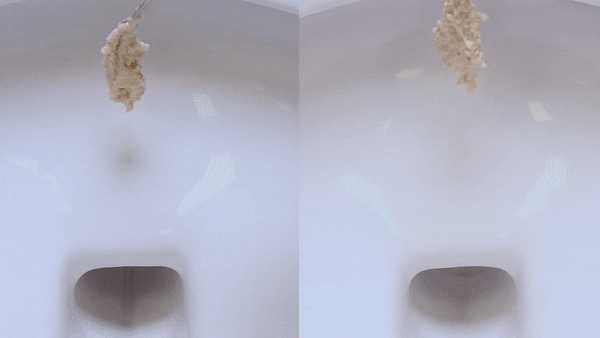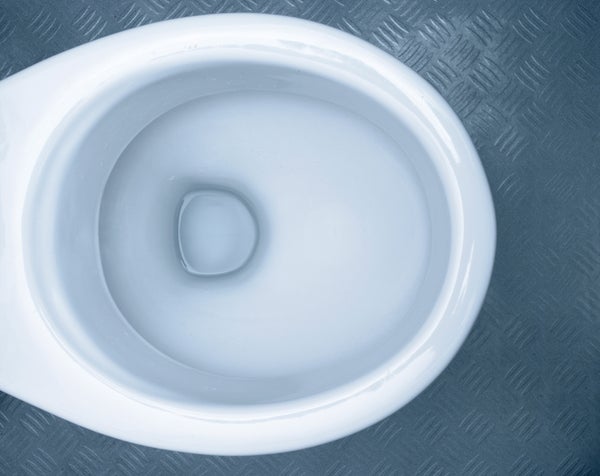About 2.4 billion people worldwide lack access to adequate toilet facilities, and hundreds of children die every day from preventable, sanitation-related diarrheal diseases. But water scarcity—a worsening problem in many low-resource environments—is one factor that makes it difficult to meet the need for clean, functioning toilets. “Many parts of the world don’t have flushing toilets because they just don’t have the water required to operate them,” says Peter Lillehoj, an engineer at Michigan State University. Like a number of other researchers, he believes that minimizing the amount of water necessary for cleaning each toilet would increase access to sanitation.
To design more sustainable facilities, the Bill & Melinda Gates Foundation launched a Reinvent the Toilet Challenge several years ago. Most of the participants have focused on redesigning toilets as high-tech devices that can, for example, run on solar power or turn human waste into affordable energy and clean water. But according to Carl Hensman, a senior program officer at the Water, Sanitation and Hygiene program at the Gates Foundation, even the fanciest new throne has to contend with the more fundamental problem of “improving antifouling”—preventing waste from sticking to toilet surfaces.

Droplets that linger on a standard glazed toilet bowl (bottom) slip rapidly off a surface coated with LESS (top). Credit: Jing Wang and Tak-Sing Wong Penn State
On supporting science journalism
If you're enjoying this article, consider supporting our award-winning journalism by subscribing. By purchasing a subscription you are helping to ensure the future of impactful stories about the discoveries and ideas shaping our world today.
Now a team of materials scientists at Pennsylvania State University has developed a promising potential solution: an ultraslippery coating that prevents liquid and solid waste from sticking to the toilet bowl, halving the amount of water needed to flush. The researchers say it is more effective than existing hydrophobic, or water-repellent, coatings for toilets, which shed liquid waste well but are less effective for solids. The novel veneer is also antibacterial, which, the researchers say, would reduce a main cause of bathroom odors and lower, by 90 percent, the amount of cleaning material needed to keep toilets sanitary.
“We think this can have a big impact, because everyone needs to use the toilet. And everyone wants the toilet to be clean,” says Penn State materials scientist Tak-Sing Wong, senior author of the study, published on Monday in Nature Sustainability.
The new coating, called liquid-entrenched smooth surface (LESS), consists of two layers. First, researchers spray the inside of the toilet bowl with a silicone material called polydimethylsiloxane, which forms chains of long, stringy molecules known as polymers. The ends of these chains fix themselves to the toilet surface, forming a permanent base layer of “nanohairs.” This layer is then sprayed with a silicone oil lubricant about one thousandth of a millimeter thick (roughly half of the length of an Escherichia coli bacterium). The hydrophobic polymers that make up the base layer shed water but attract the silicone oil, keeping the lubricant in place for about 500 flushes (after which more silicone must be applied). The concept was inspired by the carnivorous pitcher plant, which has tubelike modified leaves with slippery interior surfaces that cause unlucky insects to slide into its trap. “One of the key innovations was to use a smooth, lubricated surface, which nature has been using for many years,” Wong says.

Some hydrophobic coatings fail to work on solids, but LESS helps synthetic feces slide off a coated toilet bowl (left) more quickly than a standard one (right). Credit: Jing Wang and Tak-Sing Wong Penn State
The fact that the coating requires consumables—regular reapplications of silicone oil and the eventual repair or replacement of the nanohairs—means maintenance costs could present an obstacle in some communities. Although the paper presents “actually quite fascinating results,” Hensman says, “it would be highly unlikely that this exact approach would be implemented globally in these developing countries.” Still, he adds, the concept is intriguing and could potentially be modified or built on in the future. “I’m a chemist by education. I can get excited by all of this stuff,” Hensman says. “But then you have to have the reality check of ‘How does this affect the business model?’ Because it has to be sustainable at the end of the day.”
Financial sustainability may be a problem, but at least the materials are believed to have a relatively low environmental impact. Hensman says the silicone nanohairs are made of chemicals often found in toothpaste and makeup and are already present in wastewater. As for silicone oil, it is a commonly used lubricant. “I think that is one of the unique advantages of this technology,” says Lillehoj, who was not involved in the research. “It doesn’t require harmful or toxic or expensive chemicals. This is something that is pretty readily available.” There is some evidence that silicone oil can be an environmental problem in large quantities, but it is generally not seen as being dangerous at the levels suggested in the paper.
Even if the coating does not make its way to toilets in the developing world, its creators envision diverse applications for the technology. Wong suggests it could protect ships’ hulls from “biofouling,” the accumulation of barnacles and other marine life. It could also reduce the buildup of efficiency-reducing insect remains or other contamination on wind turbine blades or help keep vehicle windshields clean (along with other other automotive uses). Lillehoj, who works with medical devices and diagnostics, adds that hospitals could potentially use LESS to prevent bacteria from sticking to surfaces. He thinks it could coat endoscopes, catheters and implantable devices to minimize the adhesion of bacteria and thereby reduce infection risks. Last year Wong’s team created a start-up company, spotLESS Materials, to make the coating commercially available for such uses.
“What brings all of these applications together is the problem that arises from surface contamination,” says Birgitt Boschitsch Stogin, CEO of spotLESS Materials and a recent Ph.D. graduate of Wong’s lab. “Our team is passionate about bringing technology from the lab to the real world, where it can have a real impact.”
